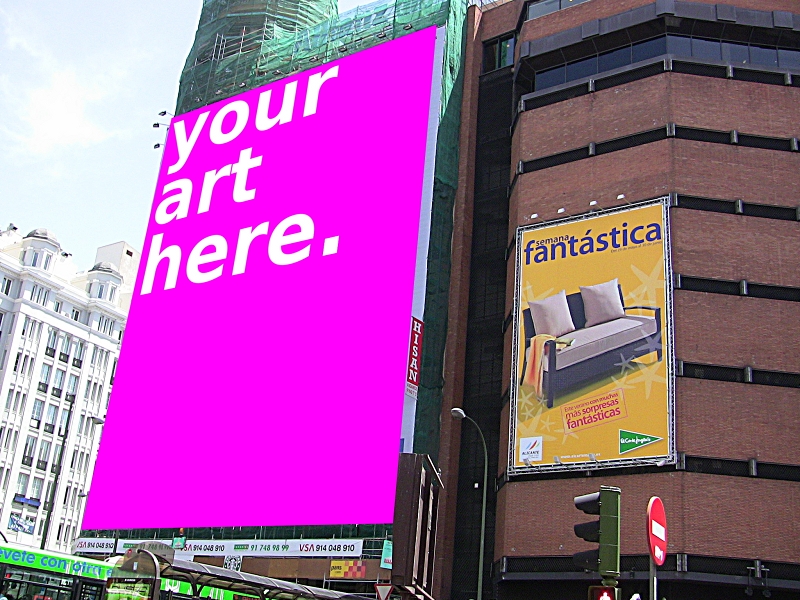Mugalari Published on May 28, 2010.

At a time when the technologies applied to urban surrender increasingly commercial exploitation Artvertiser The project proposes the opposite: to replace the ads on billboards, walls and buildings works of art subversive slogans.
When star of the movie "They Live" put sunglasses you found on the street by chance, he discovers the world around them is hiding a secret. Seen through them, the ads are actually subliminal messages that call to obedience and worship of money and the rulers, disguised aliens who use consumer society to dominate humanity. Directed by John Carpenter in 1988 and inspired by a science fiction story by Ray Nelson in the sixties, "They Live" is one of the references that the creator of The Artvertiser, New Zealander Julian Oliver , cites as inspiration of The Artvertiser project, which also collaborated programmer Damian Stewart and artists Clara Boj and Diego Diaz . The
Artvertiser takes the form of a pair of binoculars, a little bigger and bulky than normal, with which you can tour the city and the Carpenter film, revealing an unexpected reality. The device is designed to recognize certain ads, seen through the lenses, are automatically transformed into something else: a painting, a photograph, a phrase, whatever. The advertising medium, which can be anything from a billboard on a subway car is involved or directly deleted and diverted from its commercial function. Dumping the franchise becomes Fucking Donuts Donuts, the electronics chain Saturn becomes Art Sun logo, a savings is mixed with images of a house, the signs on top of the buildings have a message that says your Art here. The city is displayed as a blank canvas, as an exhibition as a narrative other than that we see every day. The possibilities are endless.
Artvertiser
The finding of an obvious but widely assumed. The advertisements are messages privately owned and commercial, located in an area yet is collective in nature such as streets, plazas, walls of buildings or the urban landscape as a whole. Advertising not only privatize these places. Also becomes one-way communication media which function similarly to digital files read-only "recipients can consume only the passive mode and in no case are allowed to modify. Although we realize it or not we have used, our everyday experience of the city is mediated by a large amount of information whose significance is closed, private and unequivocal. The
So far, The Artvertiser has involved the Puerta del Sol de Madrid, Times Square in New York, Alexander Platz in Berlin and the famous corner of Shibuya in Tokyo featuring works by artists, activists and designers selected through an open call. The software currently only works with special binoculars and notebooks, but it is envisioned that in the future can also be installed in next-generation mobile phones or with a camera. The code has been created under Linux platform and, once completed, will be launched with an open source license.
0 comments:
Post a Comment